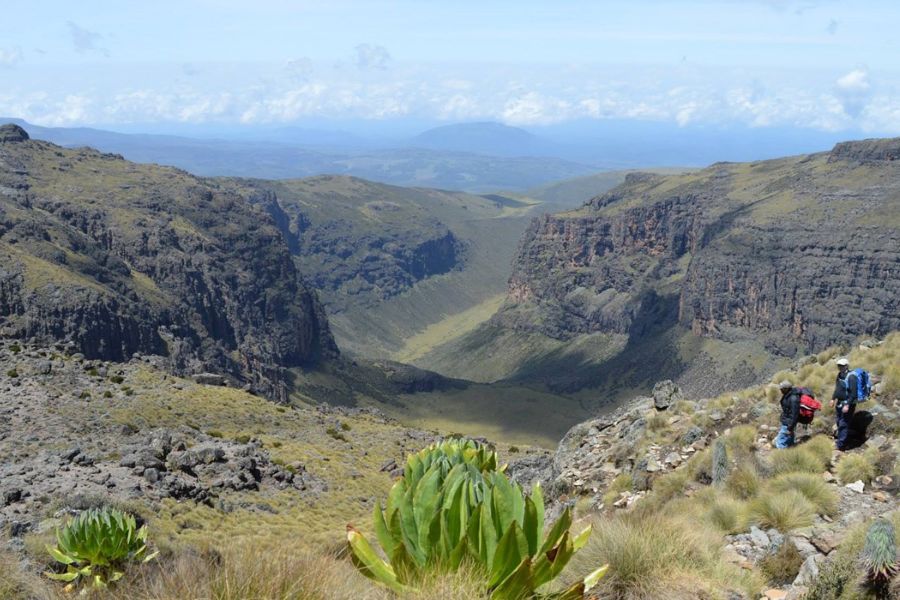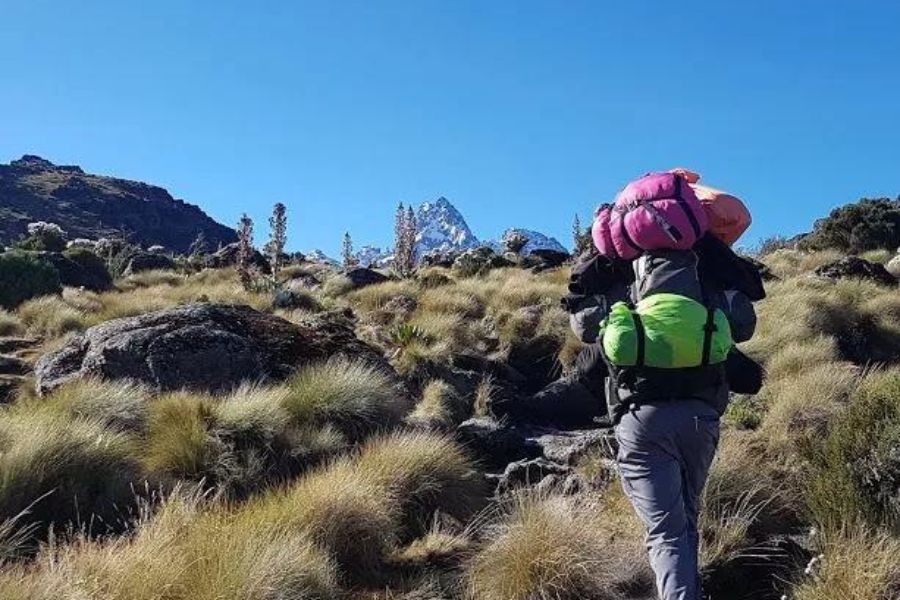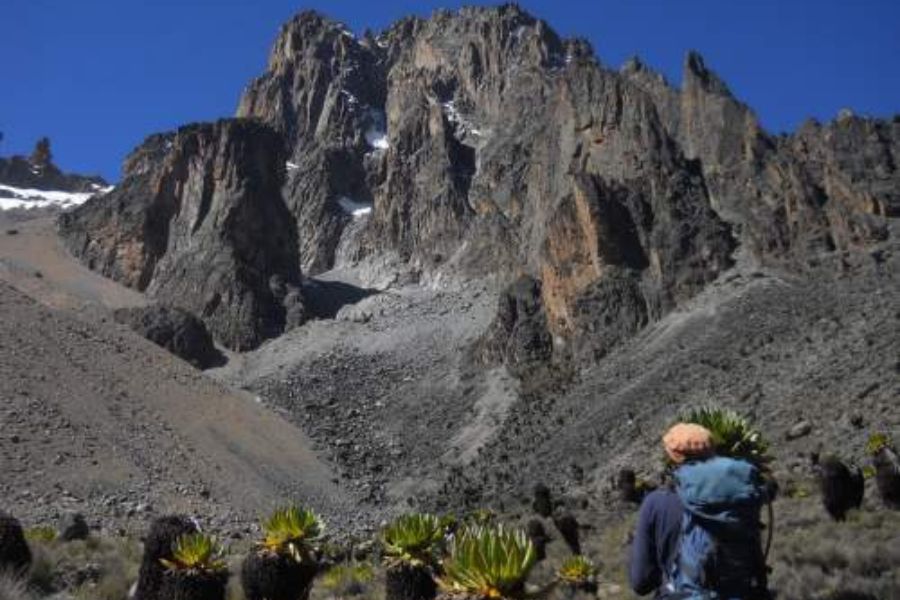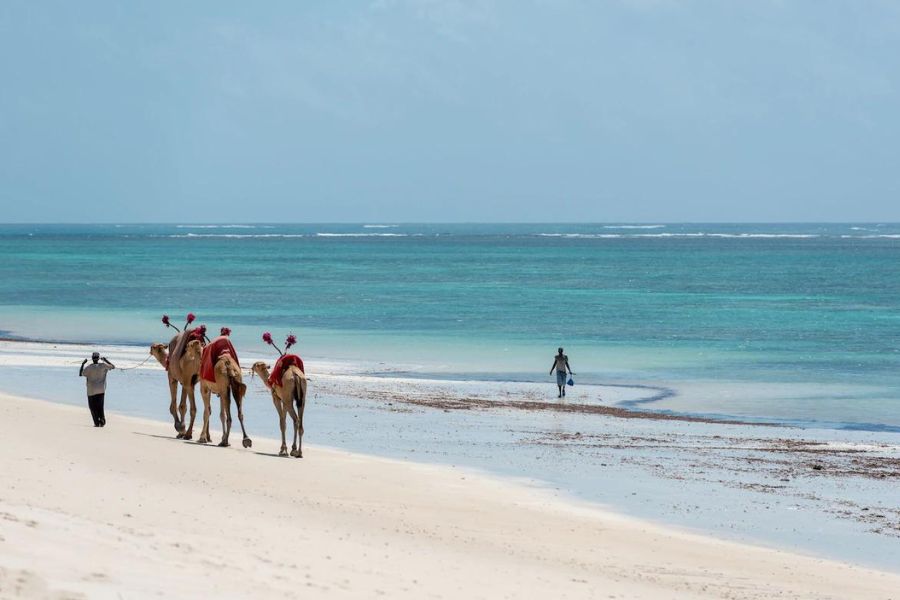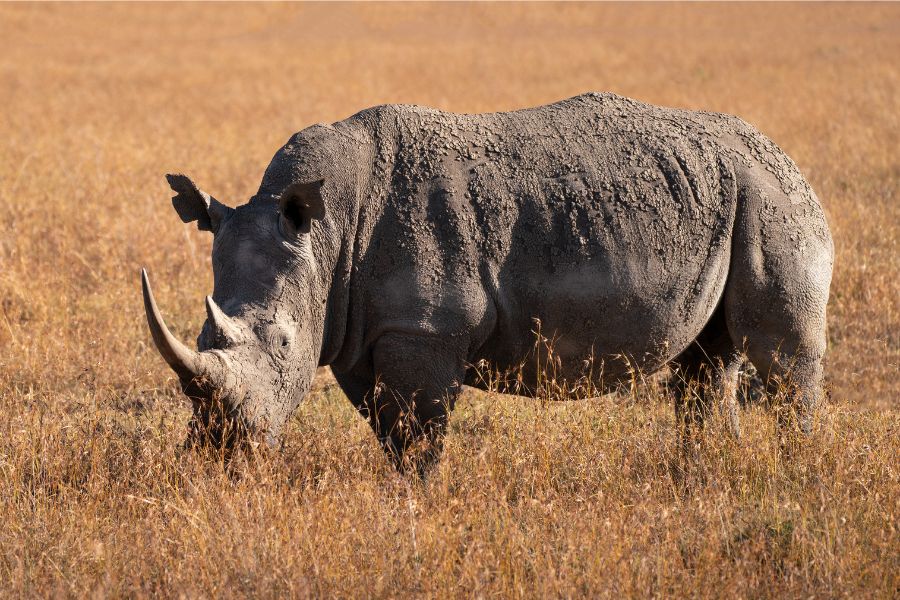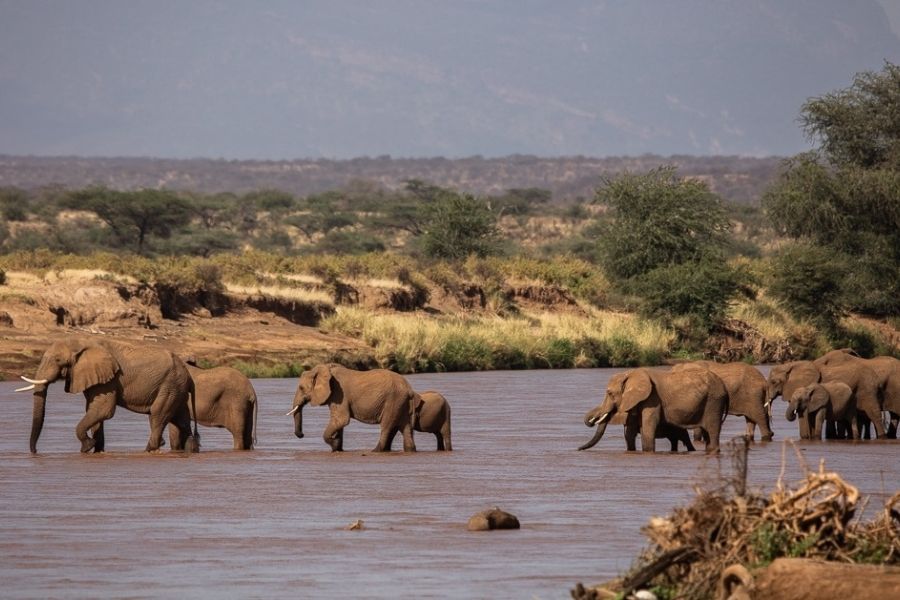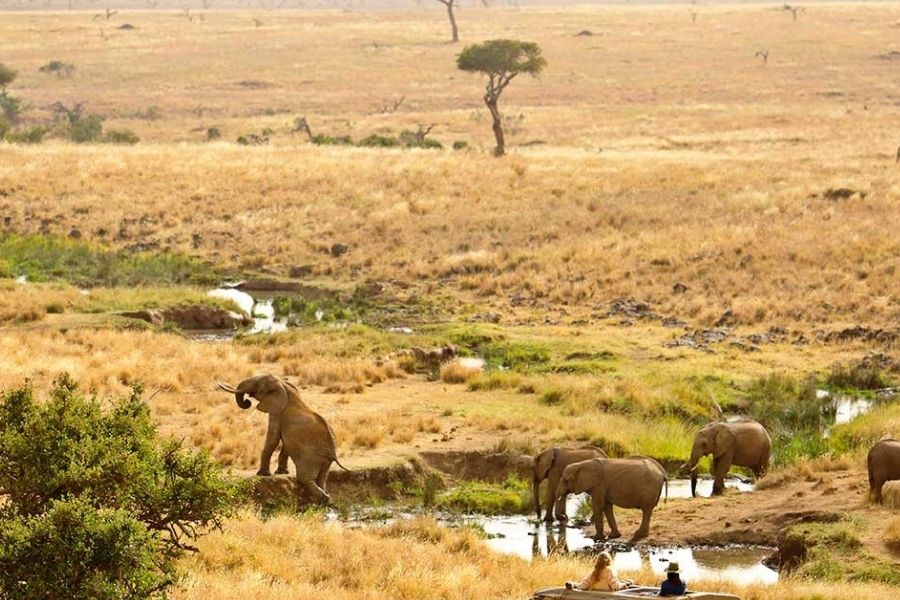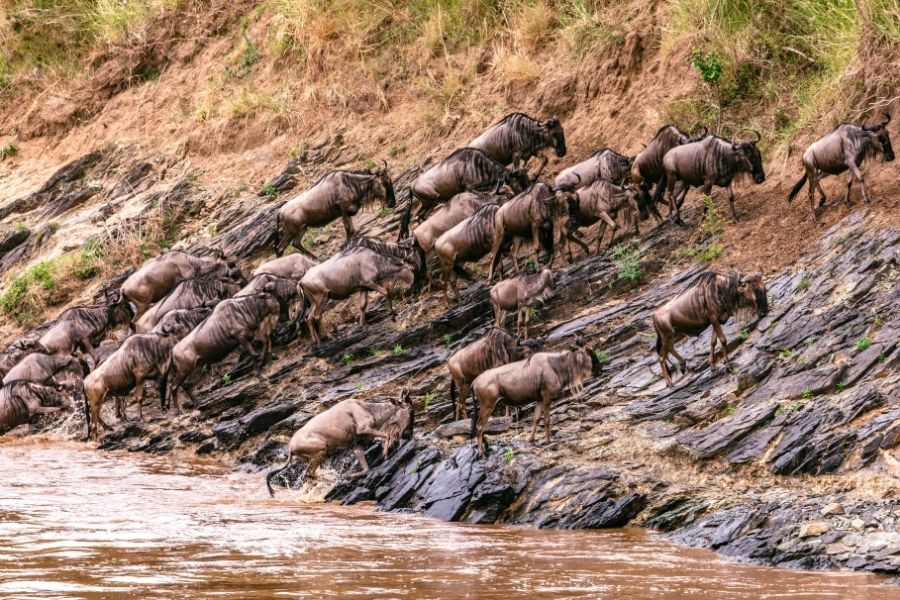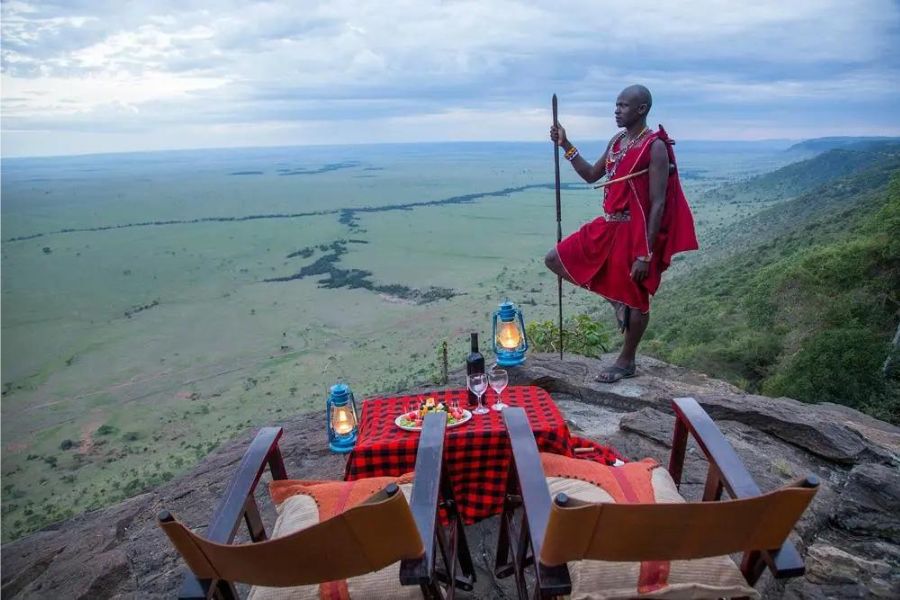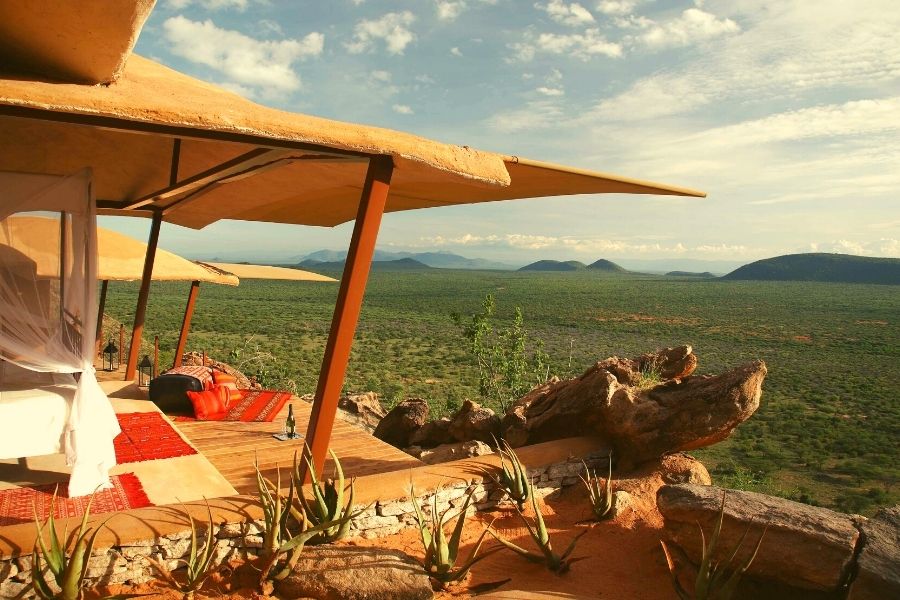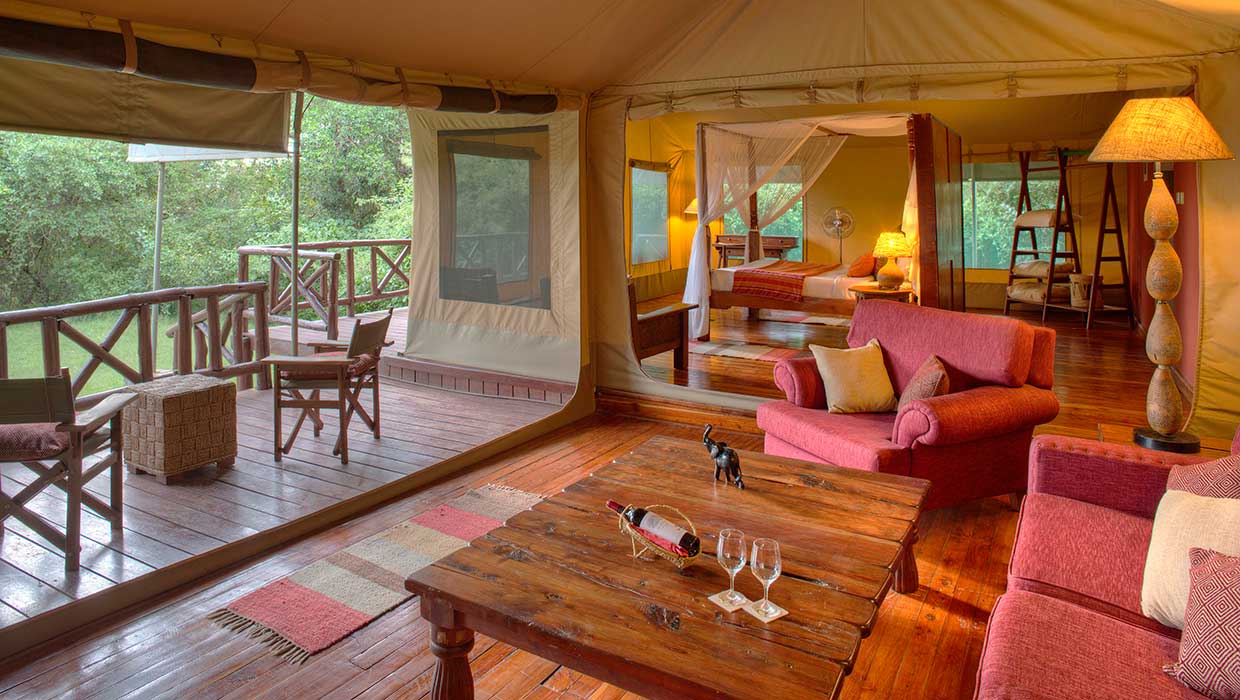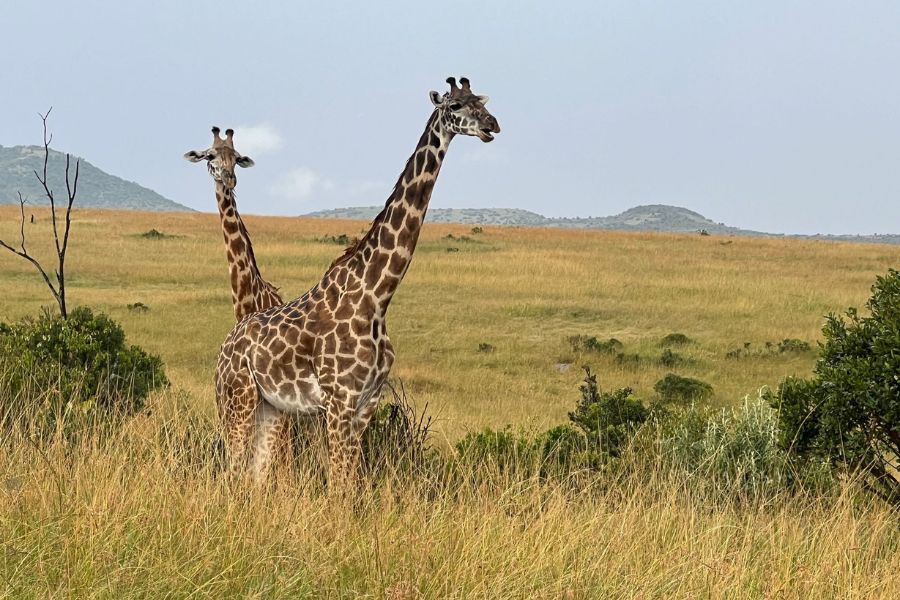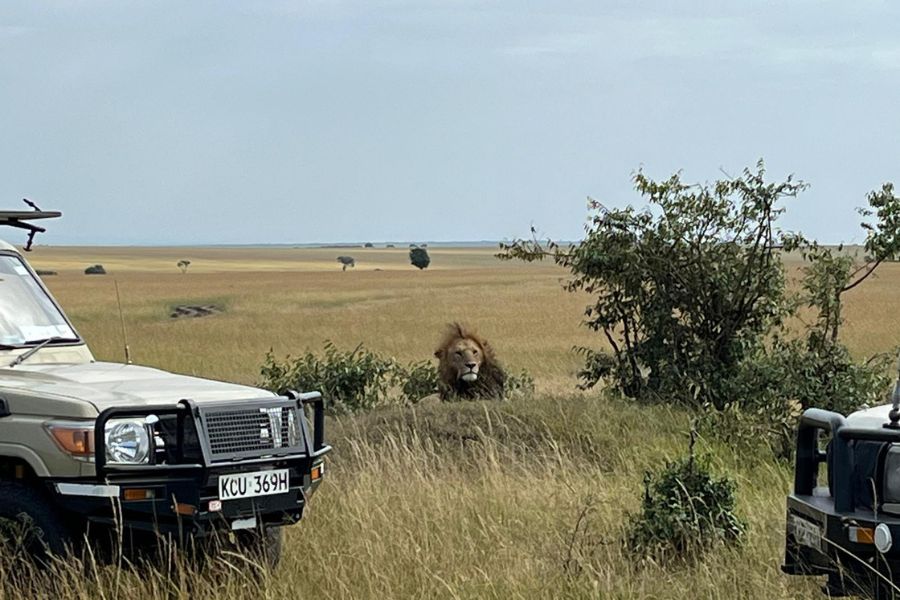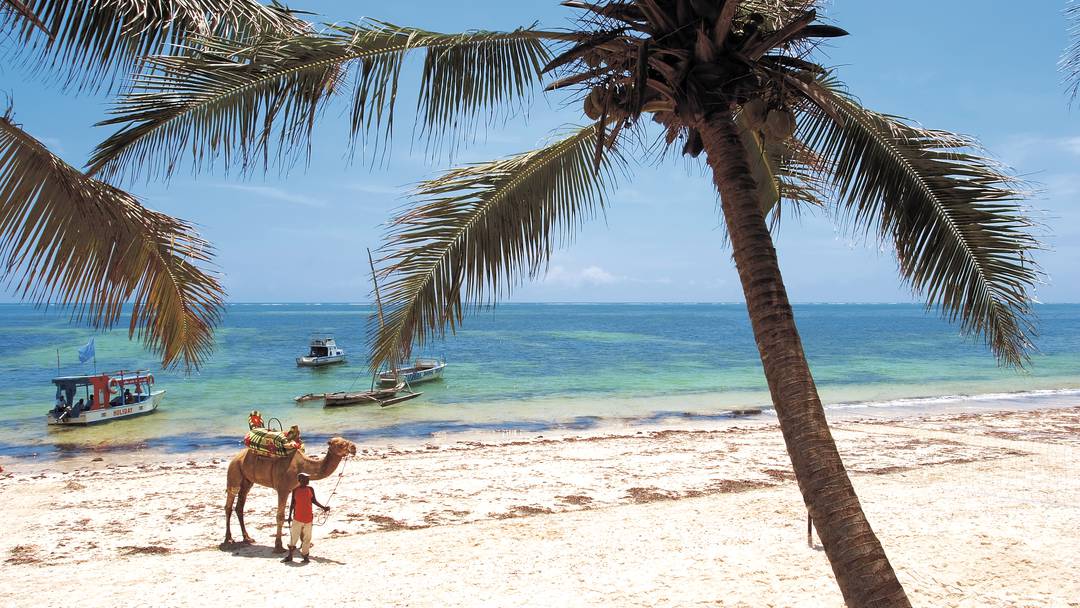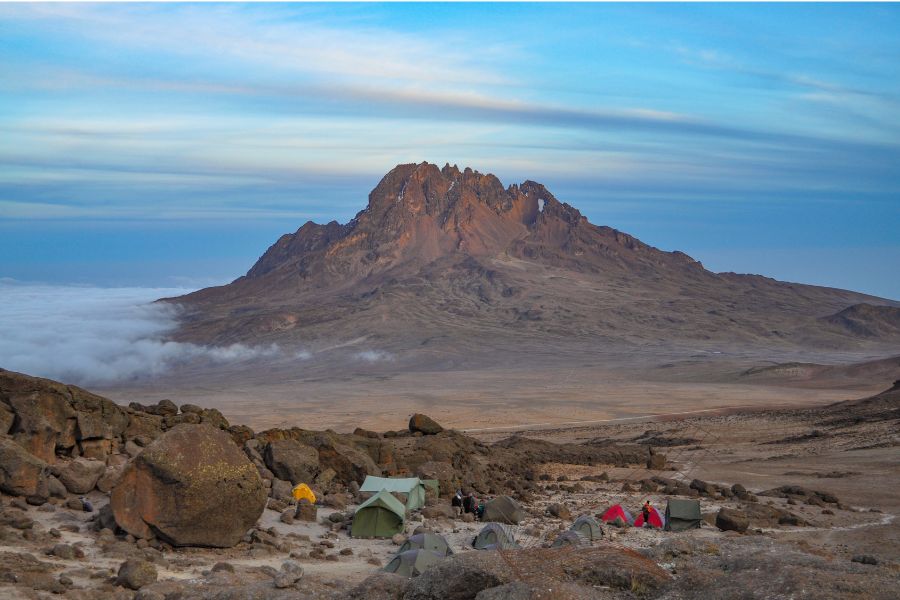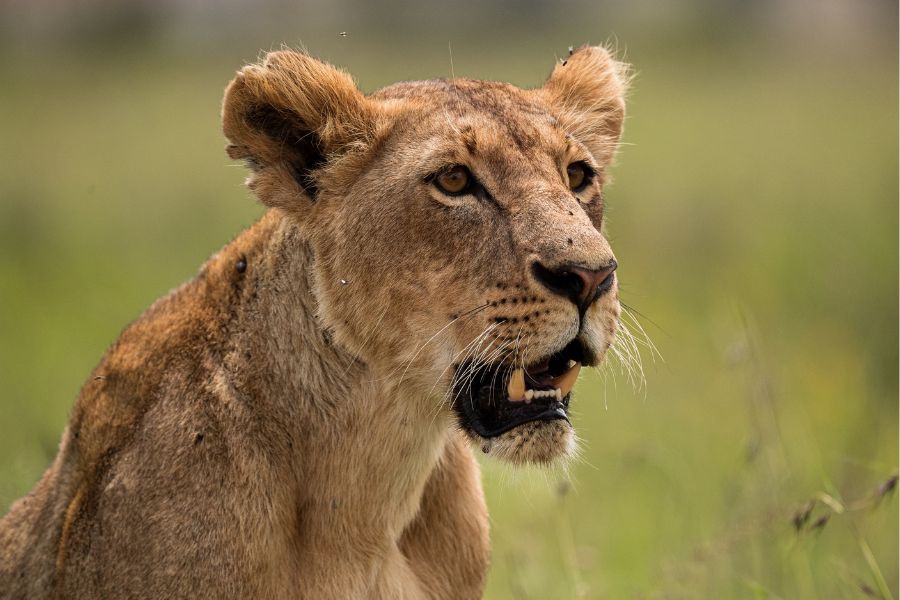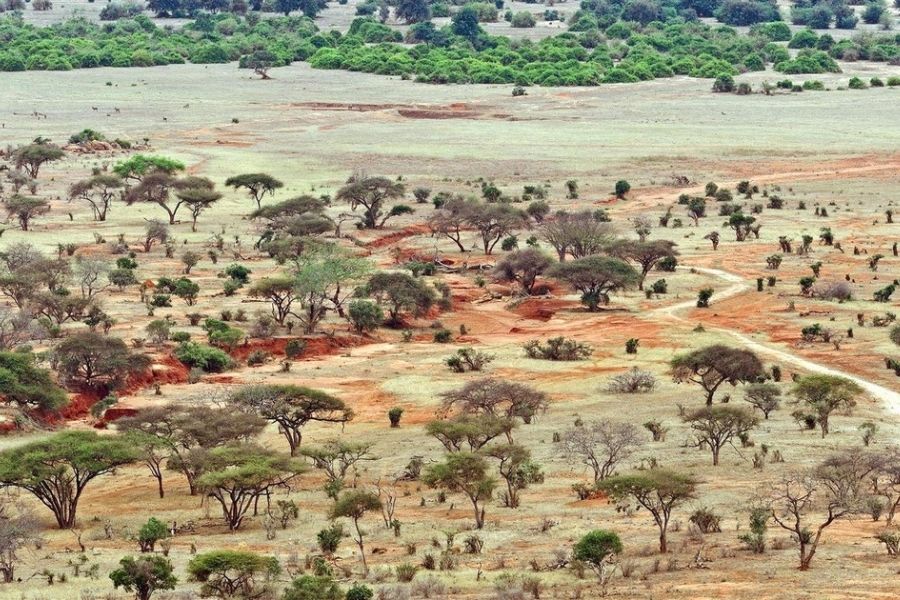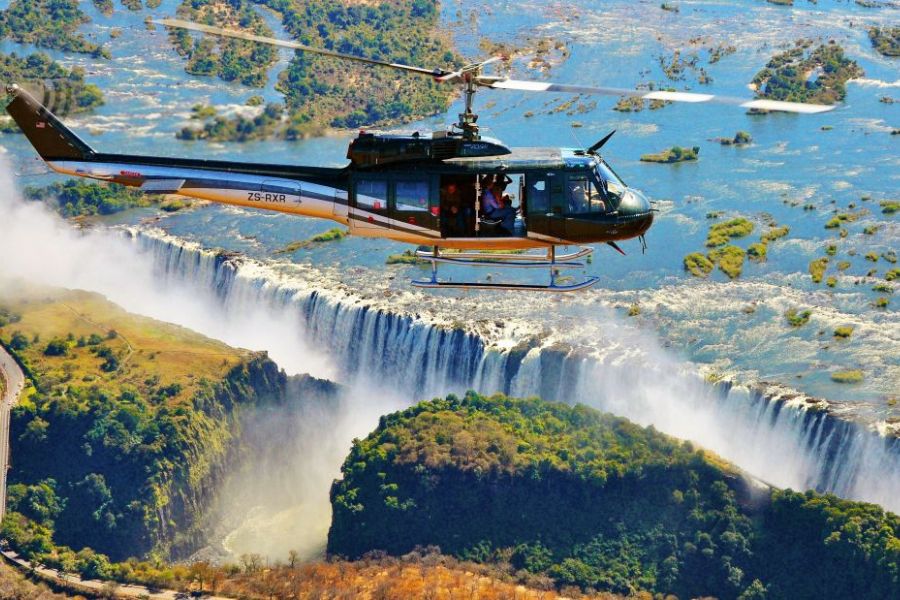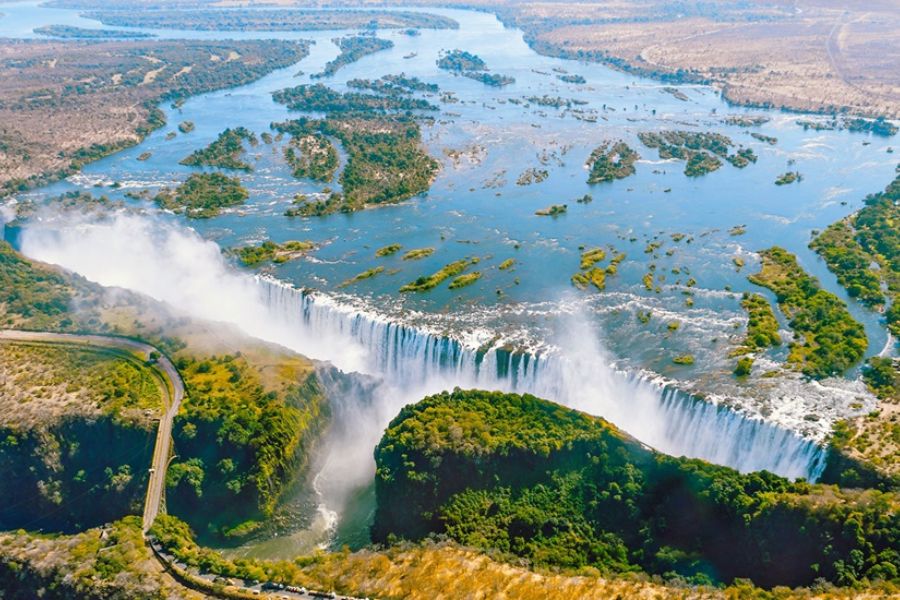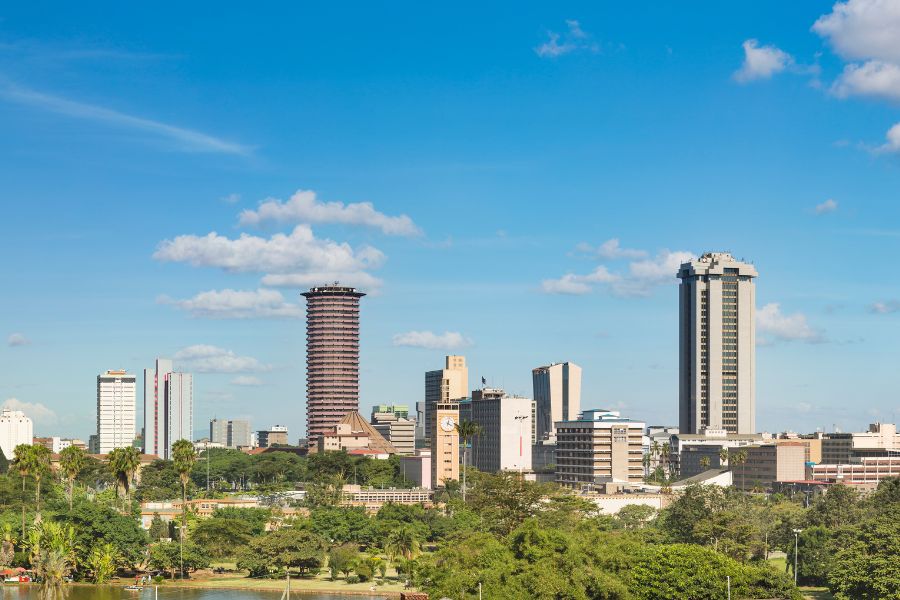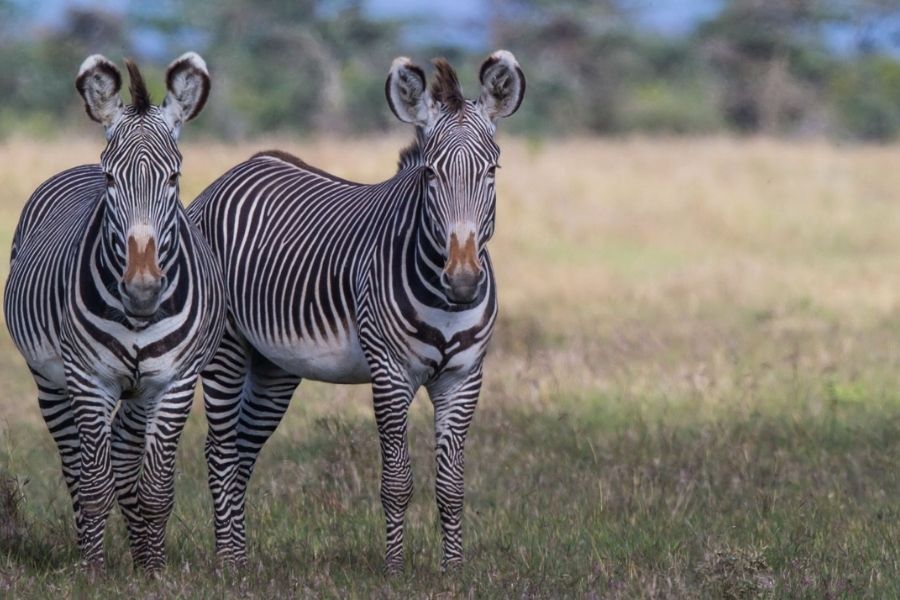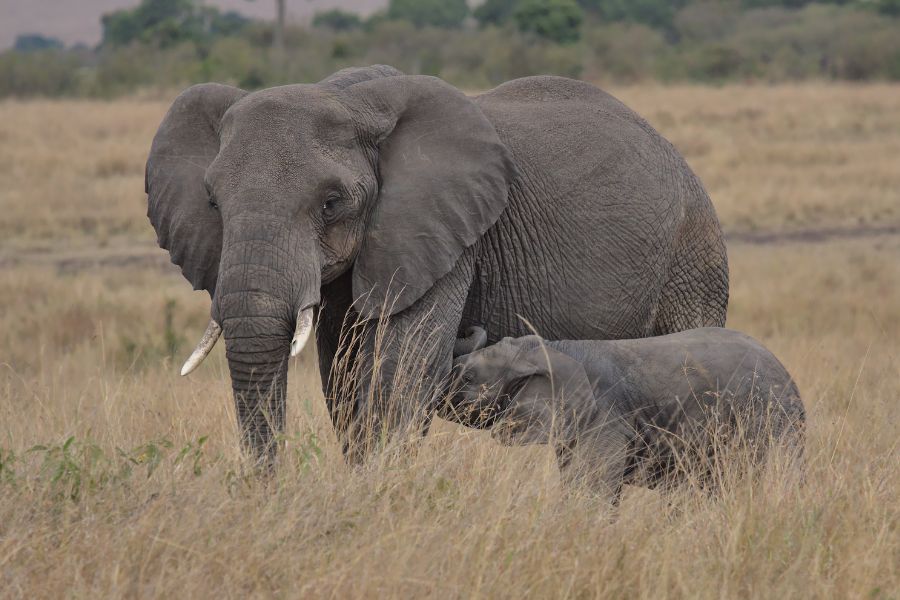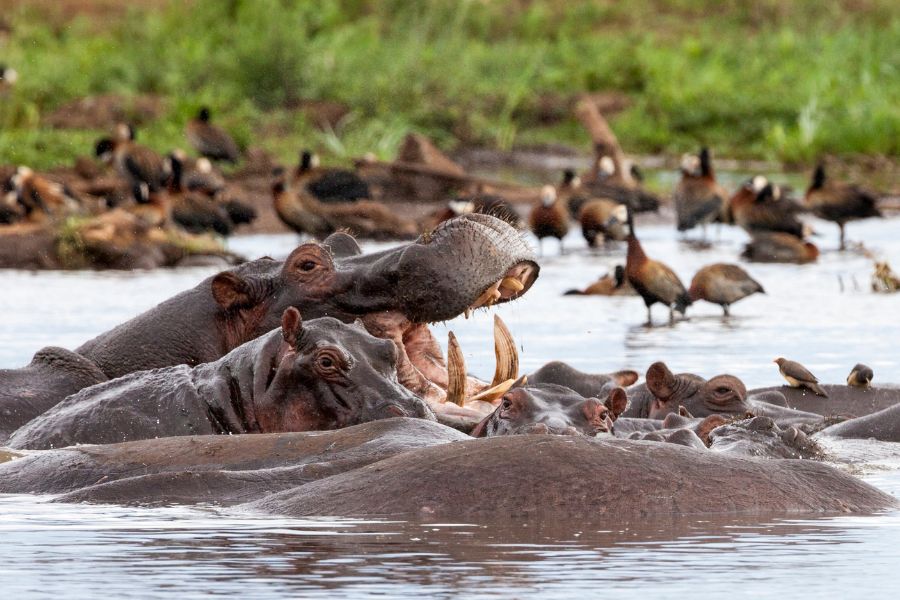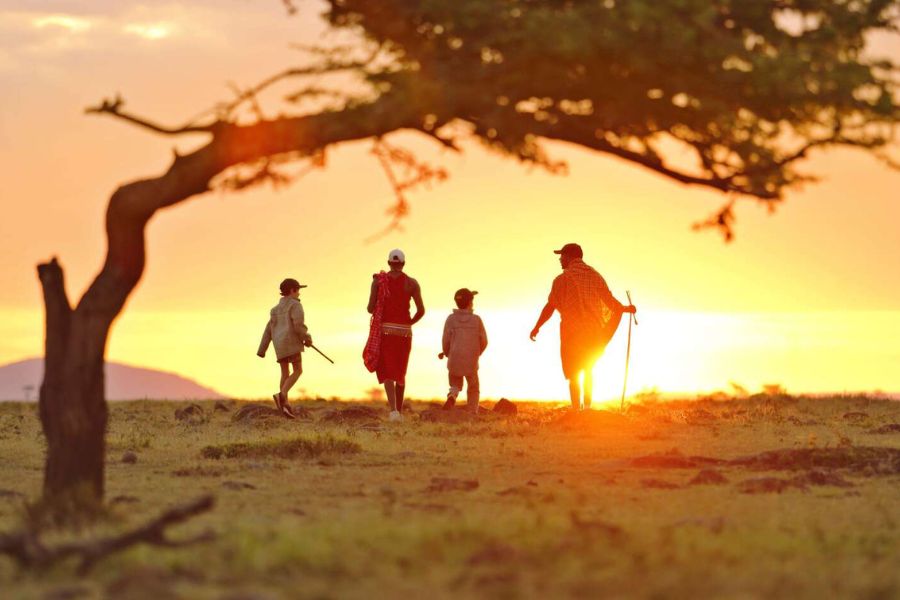If you plan to climb Mount Kenya, the Sirimon route is more picturesque than the Naro Moru route. This 4-day route takes you through a drier side of the mountain, offering some of the best walking experiences. You'll start by climbing through a forest and then approach a broad ridge that leads to the summit area. The route begins on the mountain's northwest side, near Nanyuki Town. The access to the course is adequate, and the bunkhouse facilities are the best on this side of the mountain.
You can attempt to reach the summit by hiking for four days. If you have additional time, you can spend an extra night at Liki North Camp, between Old Moses Camp and Shipton Camp. Reaching the Lenana Peak summit usually takes four days, per the itinerary below. However, we recommend overnight acclimatization at the base in Nanyuki town. Mount Kenya Climbing Expeditions can help arrange an extra day at an additional fee.
This climb can also be an acclimatization hike for those planning to climb Mount Kilimanjaro in Tanzania - East Africa. Mount Kenya is located in the eastern Great Rift Valley and is the second-highest mountain in Africa after Kilimanjaro. Like Kilimanjaro, it's an eroded stratovolcano with glaciers on its highest peaks. However, only Point Lenana, at 4985 meters (16,355 feet), the lesser of the tri-peaks, is accessible to trekkers.
The highest peaks of Mount Kenya are Batian, which is 5199 meters (17,057 feet), and Nelion, which is 5188 meters (17,021 feet). Climbing these peaks requires advanced Class 5 technical climbing skills. AfricanMecca Safaris provides guided trails to Lenana Peak, often used for acclimatization before attempting to climb Kilimanjaro. However, we advise climbers to join specialist rock climbing guides to ascend higher peaks unless Class 5 clients with known expertise make special requests.
Located east of the Great Rift Valley and on the equator, Mount Kenya National Park is 175 kilometers northeast of Nairobi. You can reach the park by road or air through the Nanyuki Airstrip. The park's surroundings are spectacular and picturesque, and it was designated as a UNESCO World Heritage Site in 1997. It covers an area of 715 square kilometers (276 square miles).
Mount Kenya is not as well-known as Kilimanjaro and receives fewer visitors. This allows it to preserve its wilderness ambiance to a greater extent. The varied glaciers descending from the summit through eroded valleys are the source of Kenya's major rivers, the Ewaso Nyiro and the Tana River, the longest rivers in Kenya.
Water cascades from Afro-alpine tundra and moorland through bands of bamboo, softwood, and hardwood forest to farmland on the lower slopes, where the Kikuyu people thrive. The mountain was considered the home of their God, and rare sacrificial pilgrimages were made to the taboo place.
The mountain was described as resembling the distinctive male ostrich with its black and white plumage because of its dark woodland and snowy cap. Sadly, the glaciers are dwindling as less snow accumulates each year, and they are expected to disappear with the rise in climate change.
Mount Kenya is home to rare flora, including giant senecios and lobelias, which are not found anywhere else in the world, as well as fauna such as the rock hyrax, a diminutive relative of the mighty elephant, which can be found when trekking on the mountain. The common duiker is also able to live here. The groove-toothed rat burrows into the giant senecios for insulation, and the Mount Kenya mole rat builds mole-hill mounds.
Mount Kenya is home to many animals, including elusive leopards. Different bird species, such as sunbirds, alpine or moorland chats, and starlings, pollinate the flowers, while augur buzzards and massive lammergeier circle overhead. If you climb Mt. Kenya, you may see Verreaux's eagle hunting the hyraxes.
The lower slopes of Mount Kenya are where you can find hyenas, buffalo, secretive leopards, and civets. These animals are not easily spotted in the thick forest. Moving lower down, you may see elephants, waterbuck, bushbuck, colobus, and sykes monkeys. In the past, many attempts to climb the mountain failed because it presented some of Africa's greatest rock and ice climbing challenges. For example, one ill-equipped party of escaped WWII prisoners who attempted in 1943 were defeated by starvation.
Nowadays, over 15000 attempts are made each year, but only a few climbers succeed in climbing Mount Kenya's higher two peaks. Less than half make it to the lesser third peak.
Climate change affects seasonal weather patterns. However, it is still considered safest to make your Mount Kenya trekking trip with Blavals Adventure (view itinerary) in the hot dry, between January and February, or from excellent July to October. During these months, daytime temperatures are warm, around 70 F (21 C) to 77 F (25 C) degrees on the lower slopes and 5 C (41 F) as you ascend higher, leading up to below-freezing temperatures at higher altitudes.
Generally, it rains from the end of March to most parts of June and around the end of October to December, making ice-climbing hazardous and bringing danger of rock falls. Around the end of December, temperatures increase with high humidity on lower slopes, making for exhausting conditions. However, there is more chance of clear skies for superlative photography on moonlit nights when ascending Mt. Kenya.
Expect some showers even during the dry period since central Kenya has slightly more rain than other regions in Kenya.
It is exhilarating to emerge onto the vast alpine moorland as you trek on Mount Kenya, with breathtakingly beautiful spires of giant lobelia, their scaled or furry flower heads reaching skywards from sheaves of sword-like lower leaves, or the architectural cabbage candelabra forms of monstrous alien senecio.
When climbing Mount Kenya, it's essential to be aware of altitude sickness symptoms, as it's possible to reach dangerous altitudes. It's recommended to take your time and spend an extra day at around 4,000 meters to acclimatize and avoid summiting with altitude sickness symptoms, such as headaches, nausea, and shortness of breath. These symptoms can affect even the most fit trekkers if they gain altitude too quickly. The view from Lenana Peak is breathtaking, but thick clouds can obstruct it. Seeing the sunrise from the peak is an unforgettable experience.
Blavals Adventure provides a professional trekking crew for your Mount Kenya trip, including a guide, a cook, a personal porter for each trekker, and one for equipment. A knowledgeable guide is essential to protect you from your enthusiasm, encourage you, and explain the significance of everything you see. It's required by the Kenyan Wildlife Service that all guides and porters are trained and licensed in their knowledge of local conditions, flora and fauna, geological formations, and high altitude sickness recognition and treatment.

